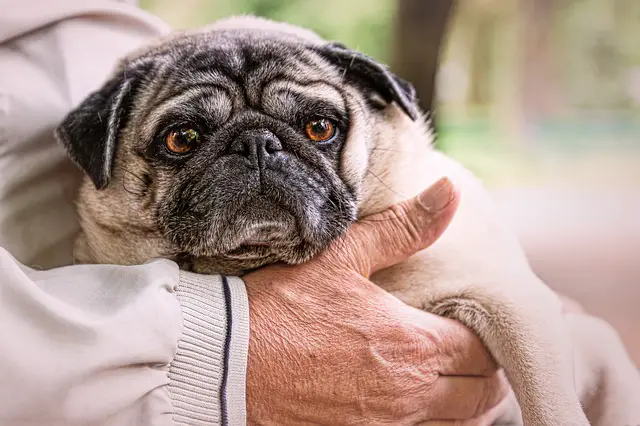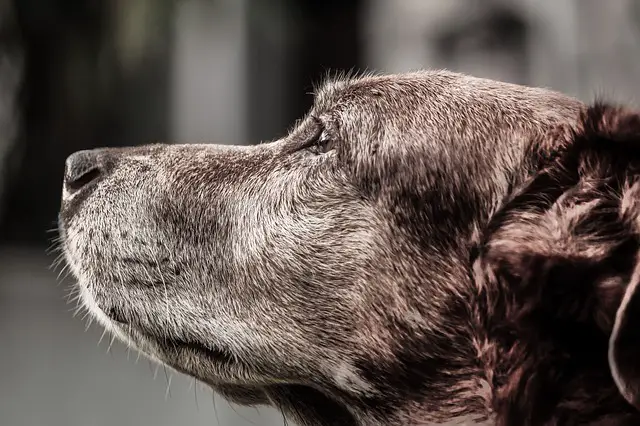Osteoarthritis In Dogs: Causes, Symptoms & Treatment
10.06.2019.
Osteoarthritis (OA) is one of the most common degenerative joint disease (DJD) that can affect our dogs. This is the most common form of arthritis in dogs, and it is estimated that as many as a quarter of the dog population is affected.
It is a chronic, permanent, long-term deterioration characterized by the loss of articular cartilage that covers and protects bones’ ends in most joints of the body. In contrast to humans, OA in dogs most commonly occurs secondarily due to developmental orthopedic disease. The joints that are most commonly affected are the hip, stifle, and elbow.
It is only natural that we want to help our dogs and ease their suffering, so as dog owners, we should learn a thing or two about this problem. We need to understand what we can do, how we can prevent it, treat it, and spot symptoms.
What causes osteoarthritis in dogs?
Contributing factors to osteoarthritis in dogs include genetics, age, body weight, obesity, gender, exercise, and diet. It is a progressive disease and continues to worsen with time, but with early discovery and the right treatment, many dogs can live comfortably for years following diagnosis.
There is no known cause for primary degenerative joint disease. However, there is a wide variety of causes for secondary DJD, such as;
- Trauma
- Abnormal wear on joints and cartilage
- Congenital disability present at birth, such as an improperly formed hip
- Obesity is another factor for DJD, as it increases stress on joints. The less weight your dog carries, the less stress it’ll be putting on its delicate skeletal system.
- Diabetes
- Prolonged steroid treatment
- Hyperlaxity (an excessive looseness of the joints) may also be at higher risk for DJD.
- Older dogs are at the highest risk.
Unfortunately, osteoarthritis and other forms of degenerative bone diseases are primarily genetic, so there are no preventative measures you can take to protect your dog.

Symptoms
Unfortunately, osteoarthritis in dogs can be a bit hard to notice at the early stages of the disease. Most dogs show little to no signs of discomfort, and those that do show signs can easily be mistaken for other issues that aren’t that serious. However, if your dog is showing some of these symptoms, be sure to contact your vet for a check-up;
- Pain when manipulating the affected area
- Signs of discomfort
- A decrease in activity like reluctance to exercise, play, run, signs of pain or soreness
- Changing behavior
- Swelling or pain in the joints
- Inability to jump
- Inability to rise (especially after sleeping or resting)
- Stiffness or limping
Any dog breed can suffer from this disease, doesn’t matter what breed, age, or sex they are, so keep in mind that you should understand your dog’s usual behavior so that you can easily spot when something out of the ordinary is happening. However, larger dog breeds are more likely to suffer from OA.

Osteoarthritis in large dog breeds
Some breeds are more likely to suffer from OA, especially as they get older. Larger breeds are more susceptible to different forms of skeletal disease than smaller dogs. These inherited conditions are commonly seen in breeds like;
- German Shepherds
- Golden Retrievers
- Labrador Retrievers
- Alaskan Malamutes
- Samoyeds
- Rottweilers
- Saint Bernards
- Great Danes
Even though Pugs and French Bulldogs are smaller breeds, osteoarthritis can frequently be found in those breeds.
Diagnosis
Diagnosis of osteoarthritis in dogs is usually made by combining a physical exam and imaging modalities, such as X-rays. Initially, a physical exam will focus on the affected joint or joints. The veterinarian can find the affected area by palpation of the limbs because the dog will respond to pain.
After a thorough examination, the vet will know which steps they should take and recommend the best possible treatment option.

How to treat osteoarthritis in dogs?
Today, with all the technology, supplements, drugs, and advanced medical developments, treatment for dog osteoarthritis has improved a great deal. The important thing to know is that this is an inherited condition for which there is no cure, but many products available these days can ease the dog’s symptoms and slow the disease’s progression.
The most important thing is to pay close attention to your dog’s health so that the OA can be detected early.
When a dog is diagnosed with osteoarthritis, the veterinarian will develop a medical management system using a combination of modalities to treat your pet to make it as comfortable as possible. These modalities include;
- Special diet
- Exercise regimen
- Medication
- Supplements
- Massaging techniques
- Physical therapy ensuring a good quality of life for your dog
Since osteoarthritis can be painful, painkillers like Meloxicam are usually prescribed.
The surgical procedure for osteoarthritis in dogs is indicated when conservative treatment is shown to be unsuccessful. The primary goal of surgical treatment is to relieve pain and inflammation and to maintain joint function. If the surgery is needed, your vet will recommend it as a last resort.
Dogs that undergo surgery have high percentages of significant recoveries, especially if the surgery includes a total replacement of the diseased joint.
World Dog Finder team







Share